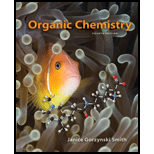
(a)
Interpretation: The resonance structure of the given cation is to be drawn.
Concept introduction: The method by which overall delocalization of electrons can be described in a particular molecule is known as resonance. The resonance takes place between the positive charge and the lone pair of atoms present in the ionic compound.
(b)
Interpretation: The resonance structure of the given cation is to be drawn.
Concept introduction: The method by which overall delocalization of electrons can be described in a particular molecule is known as resonance. The resonance takes place between the positive charge and the lone pair of atoms present in the ionic compound.
(c)
Interpretation: The resonance structure of the given cation is to be drawn.
Concept introduction: The method by which overall delocalization of electrons can be described in a particular molecule is known as resonance. The resonance takes place between the positive charge and the lone pair of atoms present in the ionic compound.
Want to see the full answer?
Check out a sample textbook solution
Chapter 11 Solutions
Connect Access Card For Organic Chemistry
 Organic Chemistry: A Guided InquiryChemistryISBN:9780618974122Author:Andrei StraumanisPublisher:Cengage Learning
Organic Chemistry: A Guided InquiryChemistryISBN:9780618974122Author:Andrei StraumanisPublisher:Cengage Learning
